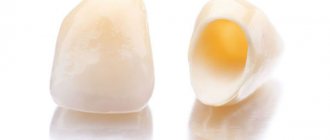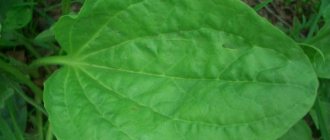Saliva is a fluid in the body that performs important functions. After food enters the oral cavity, the process of digesting food begins with the help of enzymes found in saliva. It also moistens food to make it easier to swallow and taste the food. Saliva neutralizes alkali and acid, and also protects against various microbes.
Quite often, people turn to medical institutions asking why there is blood in their saliva. If everything is normal in the body, then there should be no blood. If it is, then it is necessary to find out the reasons and determine the correct treatment. It is important to understand that saliva with blood can be both a safe phenomenon and a sign of a dangerous pathology.
Bloody discharge can be classified according to daily volume: true hemoptysis (no more than 50 ml), light bleeding (no more than 100 ml), moderate (up to 500 ml), heavy (up to 1000 ml).
Symptoms
Blood is usually present in the mouth in small quantities and is visible in saliva that is reddish in color or has bloody spots or clots. Less common is bleeding, in which there is a lot of blood, it drips or flows out of the mouth and stains the bed linen (this can be determined by marks on the pillow or blanket). The symptom is detected in the morning, because at night a person does not feel it, being in a relaxed state in which the brain is partially turned off and does not receive signals transmitted from the body.
The taste of blood in the mouth in the morning is metallic and slightly salty. In addition to the characteristic taste, other symptoms are observed: pain or discomfort in the oral cavity, an unpleasant sourish or putrid odor, ulcers or wounds on the inside of the cheeks and lips, tongue or tonsils, increased body temperature, white, yellowish or brownish coating, increased salivation.
Interesting fact: the presence of blood does not necessarily appear in the presence of a bright scarlet liquid. When mixed with saliva, the color changes to pinkish. The clotting process darkens the blood: when clotted, it turns dark burgundy or brown. If additional impurities are present (pus, food debris), the color becomes even more unusual.
Pulmonary diseases
Most often, blood appears in saliva due to diseases of the respiratory system. Among them are the following pathologies:
- Tuberculosis. Blood can be released both without a cough and during it.
- Bronchitis. At first the cough is dry, then sputum with pus and scarlet streaks appears.
- Acute pneumonia. Most often, the discharge is rusty in color, less often scarlet.
- Lung cancer. A prolonged cough that produces red mucus.
- Benign formations, such as polyps.
- Lung abscess. In addition to bloody streaks, the sputum contains pus and a putrid odor.
- Pulmonary infarction.
- Parasitic lung infection.
- Fungal infection.
- Lung injury: bruise, gunshot wound, rupture, etc.
- Silicosis.
- Bullous emphysema.
- Cystic fibrosis.
- Pulmonary vascular hypoplasia.
- Foreign body in the lung.
Causes
Why does such an alarming symptom appear?
Blood in the mouth after sleep has different sources, all possible ones are discussed below:
- The banal reason is mechanical damage to the gums, tongue and other parts of the oral cavity. Mucous and soft tissues can be damaged and lose integrity if you carelessly brush your teeth, use a toothbrush with hard bristles, carelessly use dental floss, fail to remove a piece of food stuck between your teeth, accidentally bite your tongue or cheek, or chew rough and hard food. After damage, a bleeding wound is noticeable, but it is sometimes difficult to detect.
- Periodontitis is inflammation of the gums. The mucous membranes and soft tissues become thinner and lose their integrity, the capillaries that penetrate them are damaged and burst. Patients experience increased bleeding that occurs during brushing teeth, chewing food, or in a calm state if the disease has become chronic and is in the acute stage.
- Blood found in the mouth after sleep may mean stomatitis, which can develop in both an adult and a child (the disease is more common in children). There are ulcers, white plaque, blisters, redness, and pain in the mouth. Stomatitis is caused by bacterial, fungal and viral infections: pathogens penetrate tissues through damaged areas.
- Gingivitis is an infectious lesion of the tongue, accompanied by a violation of tissue integrity.
- Throat diseases, such as tonsillitis. The acute form or chronic long-term course provokes damage to the mucous membranes and soft tissues of the tonsils. The capillaries burst, blood is released in moderate quantities, entering the saliva and turning it pinkish. With tonsillitis, the throat becomes red and very sore, sometimes it is uncomfortable or impossible to swallow, there is a cough, the breath begins to stink, pustules or white plaque appear on the tonsils, lacunae (depressions in the tissue) increase and are filled with pathological contents.
- Diseases of the nose. The ENT organs are closely connected, so the contents of the nose enter the pharynx, and from it into the oral cavity. Inflammatory processes provoked by infections cause the appearance of mucus, damage to capillaries and blood vessels. The discharge mixes with the blood, accumulates and penetrates the throat and mouth. During the day, when the body is in an upright position and frequent swallowing movements are carried out, the contents of the nose pass through the pharynx and go down. At night, a person lies down and does not swallow, so the mucus containing bloody spots is not removed, accumulates in the throat and ends up in the oral cavity.
- The cause of the symptom may be a burst vessel in the nose. For a person sleeping on his back or side, blood will not flow out of the nasal cavity, but will enter the pharynx and partially into the oral cavity. Blood vessels become weak during pregnancy, due to alcohol abuse and drug use.
- Recent tooth extraction. After the procedure, bleeding is normal and will soon stop in a healthy person. A clot forms in the hole, which after some time separates and enters the saliva. After separation, a moderate amount of blood may be released again.
- Diseases of the gastrointestinal tract. With erosive gastritis or peptic ulcer with increased acidity of digestive juice, the mucous membranes of the organs are damaged, and in severe cases they bleed. The contents of the stomach, along with juice and bloody inclusions, can partially enter the oral cavity through the esophagus. Symptoms observed: belching with an unpleasant taste, pain and spasms in the epigastric region, indigestion and stool disorders.
- Diseases of the respiratory system. Blood is released from the lungs during severe coughing attacks in tuberculosis. People are getting sick with this disease less often, but no one is immune from it. Tuberculosis is dangerous and in advanced stages leads to death, but is treatable provided that the diagnosis is made in a timely manner and effective therapy is carried out.
- A rare but possible cause is bleeding from internal organs (stomach, esophagus). The blood will be scarlet, filling the oral cavity. With this symptom, rest, immobilization of the body and immediate medical attention are required.
- In children, bleeding occurs when teeth fall out.
- Use of braces or removable dentures.
- Damage to the jaw after blows and falls.
- Severe injuries to the chest and abdominal cavity can lead to rupture of internal organs and bleeding.
Why might my nose bleed?
Nosebleeds are classified into “anterior” and “posterior.” In the first case, the cause is damage to small blood vessels, this type is usually easy to stop. The second case is considered more dangerous; bleeding occurs due to injury to large vessels located deeper in the nose, so it cannot be dealt with at home. If the blood is “spouting”, this is a reason to urgently call an ambulance.
Causes of nosebleeds include:
- nasal injuries;
- thinning of the mucous membrane;
- inflammatory processes in the nasal cavity;
- fragility of blood vessels, heart and blood diseases;
- a sharp increase in blood pressure;
- uncontrolled use of certain medications (anticoagulants, NSAIDs, vasoconstrictor drops for the common cold).
Timely diagnosis: which doctor to contact
If you notice blood coming from your mouth in the morning, this is a reason to contact a specialist. In a single case, carefully examine the oral cavity and remember what preceded the onset of the symptom: a visit to the dentist, damage to the oral cavity, eating hard or rough food?
If there are numerous and regular episodes, you should seek medical help: an experienced doctor will prescribe an examination, make a diagnosis and select effective treatment. If you don’t know which specialist to visit, go to your local physician: he will conduct an examination and issue a referral to a gastroenterologist, otolaryngologist, phthisiatrician, dentist or pulmonologist. Diagnostics may include x-ray examination, FGS, computed tomography or magnetic resonance imaging, laboratory tests of blood, saliva and plaque particles.
Treatment
The directions of therapy for the appearance of blood in the mouth in different cases are discussed in the table:
| Problem | Solution |
| Mechanical damage | The use of antiseptics (Miramistin, Chlorhexidine) to avoid tissue infection, local wound-healing agents for rinsing or irrigating the oral cavity (Solcoseryl, Cholisal, Cryogel). |
| Periodontitis | To treat gums, strengthening, anti-inflammatory, antiseptic and regenerating local agents are used: rinses, gels, specialized toothpastes. |
| Stomatitis, gingivitis | Antifungal and antibacterial drugs (depending on the nature of the infection), local anti-inflammatory, antiseptic and wound healing agents. |
| Diseases of the gastrointestinal tract | Antacids (Almagel) that help protect and heal mucous membranes, drugs that neutralize hydrochloric acid (Rennie, Phosphalugel), dietary nutrition (excluding foods that increase the acidity of gastric juice and irritate the mucous membranes of the stomach). |
| Diseases of the nose | Vasoconstrictor, anti-inflammatory drops and sprays, including herbal preparations. For long-term illness, hormonal medications are recommended. |
| Lung diseases | Antibiotics, drugs that thin sputum and make it easier to clear. |
Folk remedies are effective, but it is advisable to use them as a supplement to the main therapy prescribed by a doctor. Several recipes:
- Chamomile or sage decoction. A tablespoon of dried raw materials is poured with one glass of boiling water. The mixture is simmered for ten minutes over medium heat, infused for half an hour and cooled, filtered and used for rinsing for diseases of the oral cavity.
- Oak bark promotes wound healing. Pour two tablespoons of raw material into 300 ml of boiling water, close the container, leave for an hour, strain and use three times a day after meals for rinsing.
- Prepare a weak solution of potassium permanganate and use it to gargle and rinse the mouth.
Other diseases
Hemoptysis is observed in some diffuse connective tissue diseases and other pathologies, including:
- Systemic lupus erythematosus.
- Goodpasture's syndrome.
- Sarcoidosis.
- Polyarteritis nodosa.
- Wegener's granulomatosis.
- Leukemia.
- Thrombocytopenia.
- Hemorrhagic diathesis.
- Hemophilia.
- Vitamin C deficiency.
- Stomach ulcer.
- Endometriosis. In this case, it is due to the growth of endometrial cells into the lung tissue.
Prevention measures
To prevent your sleep and morning awakening from being marred by the taste of blood in your mouth, and if you want to avoid health problems and wake up as a healthy person, follow these rules:
- Chew food carefully, avoid excessively rough and hard foods.
- Choose a toothbrush with low or medium hardness if you have sensitive gums. Brush your teeth carefully.
- Do not put dirty hands or other objects in your mouth to avoid the development of infections.
- Monitor the condition of your mouth and gums and visit your dentist regularly.
- Go through routine examinations to detect diseases in a timely manner.
Having discovered blood in the mouth after sleep, it is important to find out why it appeared. The causes of the symptom can be different, some of them are serious and dangerous. Consult a doctor, find out the diagnosis and begin competent treatment prescribed by a specialist.
First aid for nosebleeds
To stop bleeding, first aid includes the following:
- The victim is seated on a chair or armchair so that his body leans slightly forward.
- A cotton wool or gauze swab is generously moistened with water or 3% peroxide and placed in the nostril from which blood is flowing.
- Before removing the tampon, it is re-moistened by applying liquid through a pipette, and then carefully removed.
If there is no injury to the nasal septum or a fracture of the facial bones, and there is nothing at hand to make a tampon, then simply press the wings of the nose against the septum with the thumb and forefinger. The time of such fixation is 3-5 minutes. The victim should breathe through his mouth with his head slightly tilted forward.
It is also advisable to apply something cold to the bridge of the nose or the back of the head for a quarter of an hour. To make sure that blood does not flow into the throat, simply spit and evaluate the condition of the saliva. If there are no streaks of blood in it, then there is no reason to worry.










